Let’s be clear about this: “The last stand” has no militant connotations. It is meant positively (well, at least neutrally). Jupiter-X is Roland’s latest and most superior synthesizer flagship, but there are signs that it may also be its last.
The Jupiter-X concept underlines that impression of a “final stage” – a culmination of all those Roland Sound Aesthetics milestones of the last 40 years in one neat package. Starting with the great unison sounds / sync sounds of the Jupiter-8, with the simple (but effective) arpeggio / sequencer electronic sounds of the Juno-106 / Juno-60, and with the soft pad sounds of the JX-8P, on up to the wide world of the D-50 Fantasia and bell sounds, JD-800 piano and percussion sounds and further on to the … well, let’s leave it at that. But all of these are the world of Jupiter-X. We’ll get back to the question of sound quality later.
In any case, the Japanese company has pulled all registers to put the Jupiter-X (Made in Malaysia) into the race as the “universal and ultimate” Roland synthesizer.
The fact that the Roland Cloud was launched in 2020 indicates that the company is heavily expanding its software synth production (“Experience the future with ZENOLOGY”). This, too, is a sign that Roland’s hardware synthesizer manufacturing is either coming to an end or is at least strongly in decline. We suspect Jupiter-X and Jupiter-Xm represent Roland’s “last stand” in this field.
Hardware
After the rather curious excursions into the world of “cheap-looking poly-synthesizers with plastic-housing, external PSU and 4 octave-keyboard” (JD-XA and System-8), the Jupiter-X is clear proof that Roland has returned to the field of high-quality pro-synthesizer manufacturing. Very positive.
With the exception of those small hard plastic panels to the left and right of the keyboard, the Jupiter-X housing is made entirely of metal. Valuable solidity! The musician hefting the 17 kg will definitely know he has a real hardware synthesizer under his hands.
Not only its weight, also its design and construction speak for the Jupiter-X pro-synthesizer line. The control panel tastefully curves towards the keyboard and the sloping back that offers an excellent view of the connections … just two of many positive designer details.
Regarding the construction, the use of high-quality metal potentiometers, long faders and tip buttons and the integrated power supply unit are other assets. In this sense, the Jupiter-X is once more a real ROLAND synthesizer, definitely reminiscent of the hardware quality of the Jupiter-8, or – you don’t have to look back 40 years – of the excellent construction of the Jupiter-80 and Jupiter-50.
However, a few tiny details do flaw that immaculate picture just a bit. Some of the graphics are slightly stunted (“Portamento” was clearly compressed) and the Jupiter-X logo has been shoved out to the far right corner.
These are of course insignificant details for the musician. But they once again make it clear how balanced and “coherent” the appearance of the original Jupiter-8 from 1981 actually was, also in comparison to its modern counterpart.
Jupiter-X structure: “outside”, “inside”
Most synthesizer enthusiasts will find their way around the surface of the Jupiter-X without any problems. The synth signal path is classically layed out in accordance with the vintage Roland tradition and the many sliders and potentiometers offer a simple one-knob-per-function user interface.
Test yourself: Study the following pictures of the Jupiter-X. Questions will hardly arise here – the signal flow speaks for itself …
The user panel reminds us of a Jupiter-8, Juno-106 or SH synthesizer. The crux of the matter is, Jupiter-X adheres exactly to the original synth-specifications of the respective instruments, so that the structure “outside” (the panel elements) does not necessarily match the functions of the synthesizer (the software) “inside”, depending on which model you choose.
Need an example? Model “Jupiter-8”: You’d like to activate the 2nd LFO … uhm, well, unavailable! Ah, that’s right – the Jupiter-8 has only “one” LFO. Or, model “SH-101”: You’d like to use the 2nd oscillator … again, unfortunately, nada! SH-101 is a single-oscillator synthesizer. Or, model “Juno-106”: You’d like to use one envelope for the filter and the other for the … ah, stop there. The Juno contains only one ADSR. And if you move OSC 1 / OSC 2 in the mixer section, the huge LED display shows ON or OFF – nothing else. Ah, correct – sawtooth and pulse can only be activated or deactivated on the Juno-106, their levels can’t be adjusted.
In a nutshell: Each operating step is available only according to the original instrument. This assumes that the user actually knows those vintage synthesizers very well. Which is a little ironic, since the Jupiter-X adresses a target group that possibly never owned any of those oldy-but-goldy synths. Roland simply decided on a “no compromise” workflow, albeit taking into account that Jupiter-X owners possibly might get slightly frustrated when moving sliders (or pressing switches) that don’t react at all, according to this or that specific synth model.
In practice, the Jupiter-X workflow can thus become a little problematic. The luxurious panel loaded with sliders and knobs may invite programming and sound tinkering, but creative work steps are not infrequently acknowledged with a blank “- – -” in the large LCD display and a “Not Available” message in the small graphic display. “Oh yes … there isn’t any … it does not have …” (neither the old synthesizer nor the new one).
TONE EDIT gives you the whole synth
So why the ring modulator? Or the second LFO? Why 4 oscillators? For these functions you must leave the vintage synthesizer models (Jupiter / Juno / JX / SH) and move on to the countless other models and categories (XV-5080 sounds, pianos, organs, mallets, bass, …) available on the Jupiter-X. We recommend “JP-X INT”(ernal) – that’s where you want to go for sound design. After selecting TONE EDIT on the menu, you can use – finally, finally – the entire surface of the Jupiter-X.
4 oscillator-filter-amplifier busses are available in TONE EDIT mode. Switching between them takes place in the oscillator section. The signal path offers many different Osc waveforms (Sine, Triangle, Saw, Pulse, SuperSaw, Noise, PCM – containing a few thousand samples), 2 LFOs, RingModulator, Sync, Crossmodulation and 2 envelopes … per oscillator unit (called PARTIAL ), so multiply this by four.
The 4 PARTIALs of a TONE are combined in the mixer, a convenience which results in a kind of “additive synthesis in real time”. Specifically, it allows instant mixing of the 4 partial elements of a TONE, along with all the resulting new waveforms and new sound combinations.
From our point of view, this is the first special aspect Jupiter-X offers. Each PARTIAL becomes an independent synthesizer … a system that is, admittedly, by no means new. Synth aficiandos have been familiar with this since the JD-800 (1991), the D-70 (1990) and – to some degree – the D-50 (1987) … but progress has of course been made since then. Each PARTIAL can be adjusted in its own panorama – including PAN random function, very nice – and there are a dozen filter types, plus 3 global filter character variations (called “R” – Roland, “M” – Moog?, “S” – State Variable Filter?).
4 PARTs and Rhythm (Drums)
The similarity to the JD-800 and other Roland synthesizers goes one step further. 4 PARTIALs of a TONE result – together with effects and pan / equalizing – in a PART. There are 4 of these PARTs in Jupiter-X, plus a separate Rhythm section. Everything is available at the same time, along with more or less unlimited polyphony – which is probably the really decisive advantage of the Jupiter-X over the older digital classics from Roland. (A selection of PARTs combined with various performance options is called SCENE, by the way … the Jupiter-X top level, so to speak. However, let’s stick to the 4+1 PARTs system, just to avoid any confusion.)
A short note on those blinking PART SELECT buttons. In PART mode, they flash continuously, signalizing that the user must select one of them in order to edit that PART. This is OK so far, but the constantly blinking lights are annoying in a slightly dimmed studio environment. For this, there is a simple solution. Select “System” mode, switch from COLOR SET 1 to COLOR SET 2 and the flashing PART SELECT buttons remain unlit. Done.
Back to the sound of Jupiter-X. 4 PARTs (plus drums) means at maximum load 16 synthesizers available simultaneously along with percussion and drum sounds and with various performance possibilities (I-Arpeggio, Vocoder, …). These many options represent from our point of view the second special aspect of Jupiter-X.
In Use
Despite all glory and honour, the Jupiter-X is at first glance not as user-friendly as you would wish. Admittedly, mapping out the ideal balance between the number of control elements and the size of the display is a nearly insoluble task. But while the Jupiter-80 was criticized for its limited number of manual controls in comparison to its huge display, the new Jupiter-X offers only a modest display despite a panel teaming with sliders and knobs.
The crux of the matter: That modest screen has to display a myriad of functions (all those Scene / Arpeggio / Tone Edit / System / Utility settings). Tons of lists are there to scroll through, many pages with hidden functions, astonishing subtleties and – yes – essential features. It is no coincidence that the above photo shows the assignment of the left-hand performance buttons S1 / S2 / S3 (located right next to the keyboard). S3 is relegated to HOLD … so, if you’re looking for this function on your newly acquired Jupiter-X – there it is!
The existence of various scalings / tone systems doesn’t need special mention – they have been a matter of course for decades. The Jupiter-X also offers the possibility to alter every level of our 12-tone system (c, cis, d, dis …) from -64 to +64 and thus to create a personal scale. Incidentally, this does not apply to the entire synthesizer, but – even better – to each PART individually.
It remains to be seen whether all this flexibility – all the countless options tucked away in lists – is conducive to musical creativity. The user of the Jupiter-X may occasionally find himself wishing for the simplicity of a Juno-106. Complete nonsense, of course, but a clear and simple technical environment can be favorable to musical creativity.
Sound
50 minutes of audio files can be found below. Listen and judge for yourself. You might also consult other Jupiter-X test reports / videos / sound demos. Our conclusion: The purportedly “new” sound engine of the Jupiter-X is hardly discernable as such. Rather, its relatively old-fashioned sounds and samples (which definitely have a charme of their own) emphasize the primary objective of the Jupiter-X, which is the provision of a vast collection of Roland’s most influental sounds of the last 40 years … for both the stage keyboarder and the studio musician.
But let’s be more specific. The overall sound of the vintage synth models Jupiter-8, Juno-106 and JX-8P is still convincing. Fat unison leads, heavy oscillator-sync sounds, beautiful analog tones for sequencer / arpeggiator, creamy strings … everything at your fingertips. The simulation of the smooth Jupiter-8 filter comes into its own, as does the somewhat tinny-sounding (true!) Juno-106 / JX filter. Everything quite authentic, so far.
But when it comes to sound subtleties, you’d better not expect the original. The sound produced by real analog circuits is decidedly different from the analog-modelling sound emitting from digital devices. No software simulation can match that. Roland seems to ignore this noteworthy detail. At least that’s our impression, especially when reading the latest Roland Cloud slogans, e.g. that of the TR-808:
“THE BOOM, SNAP, AND SIZZLE OF THE MOST FAMOUS DRUM MACHINE EVER – NOW IN YOUR DAW.” (www.roland.com)
A digital TR-808? Some things just aren’t possible …
Back to the Jupiter-X. In regard to the more or less useful Jupiter and Juno / JX sounds, the internal SH-101 disappointed us. Not a single sound of those countless 101 presets reminded us of the original Roland SH-101. This also raises doubts considering the quality of the latest SH-101 software synthesizer. Anyway, Jupiter-X is back on safe ground again when it comes to the emulation of Roland digital synthesizers: D-50 (morphing pad sounds, bells, etc.) and JD-800 (pop piano, percussion sounds, etc.), just to name two of those classics.
Jupiter X sound evaluation is a real challenge. On the one hand, those countless synth layers allow for large, in-depth sounds. Take a 5-PART cluster, for example: Strong Jupiter-8 sync sound in dual mode (Part 1), ultra-soft JX-8P strings (Part 2), an arpeggio pattern in the style of a Juno-60 (Part 3), Roland D-50 Fantasia-like pad sound (Part 4) plus some TR-808/909 or CR-78 drums (Rhythm part). A monumental sound impression!
On the other hand, there’s the elaborate Jupiter-X sample pool. Despite the fact that there are thousands of samples (which is good), many of them are just old-fashioned (which maybe isn’t so good). Effect sounds from the 80s/90s (taken from early Roland E-Series arranger keyboards … dog, applause, helicopter, gunshot … that sort of stuff) might make you smile (or possibly cry). Hundreds of samples of strings, wind instruments, pianos, electric pianos are there, of which many are rather antique – or, let’s say, “very classic”.
But that leads us to a new train of thought …
A synth for the “Next Generation”?
For long-established Roland freaks, the barking dog of the late 1980s / early 1990s is at best funny (if not annoying). But what about the “Next Generation”? Hardly any of the teens or twens are familiar with the Roland E-86 arranger keyboard or the Roland MT-32 sample player (for example). So maybe this is new stuff for them.
It’s exactly these sounds that are now available again. And maybe such quirky effects are delightful, maybe such strange strings fit in well with their own music. Jupiter-X has Bluetooth – we haven’t gotten around to this yet – so external music (from your Smartphone … ) can be played via the internal loudspeakers (which have also gone unmentioned until now). Smartphone music with barking dogs, strange strings and helicopter accompaniment – who knows, that sort of performance might just have innovative potential once again.
What Roland veterans tend to acknowledge with a doubtful shake of the head might just come into its own in a completely different way for the younger generation. No joke. It wouldn’t surprise us if Jupiter-X owners between the age of 20 and 30 actually find the integrated synthesizer “Model SH-101” cool. Although the 101 software is relatively far from the original, that again is something only owners of the original SH-101 might be aware of.
Be that as it may: The sample aesthetics of the 80s and 90s could have a special effect on the “Next Generation”. So we abstain from making an assessment and leave that job to the musician himself.
Many other additions …
Correct – some great aspects of the Jupiter-X have yet to be mentioned. The exemplary connections, for example: double stereo outputs (XLR and jack, excellent), two headphone sockets (3.6 mm on the front, 6.3 mm at the back), MIDI In / Out (switchable as Soft Thru), a combined XLR/6.3 mm microphone input, USB memory (for connecting a stick for data backup), USB (MIDI), and finally Control (Pedal), Hold (Pedal) and AUX In.
Other mentionables: I-Arpeggiator (rhythm / drum part plus detailed step-by-step programming), Vocoder, along with countless drum sets and the consistently good – and directly accessible – effects engine. Keyword “chorus” (indispensable for Roland’s vintage pad sounds), keyword “delay” (which animated us to create some of the sound samples, especially that feedback loop that can be faded in manually).
… and a summary
The basic sound quality of the Jupiter-X is the crux of the matter. It is neat and dependable and allows the instrument to be used for countless musical genres. Widest sound carpets, massive unison sounds, soft lead sounds, samples of all kinds and much more: the traditional, typical Roland sound palette at your disposal. A sound palette that, thanks to the many faders / knobs / potentiometers, can be adapted immediately and intuitively (for the most part) to personal musical needs.
Whether owners of classic Roland synthesizers absolutely need the Jupiter-X is an open question. After all, they have the one or other original instrument with its own special character that cannot be imitated (true for analog and for digital synthesizers).
Those who don’t yet own a Roland synth might consider the following: A singular investment of around 2,900 USD / 2,400 Euros (Jupiter-X) weighed up against the purchase of a bunch of vintage Roland instruments (SH-101, JX-8P, D-50 or JD-800) – which is the better deal, which better serves your personal purposes?
Nevertheless, three considerations can be seen as a recommendation for the Jupiter-X …
First, the “Sound Tinkering” aspect. Multi-layered programming is the alpha and omega of the Jupiter-X: 4 Partials per Tone / Part, 4 Parts at the same time. In total 16 oscillators, 16 filters, 32 LFOs, 32 envelopes … ring modulation, cross modulation, all the panorama options, the very good effects – that’s not nothing! Given enough time and energy, you can create enormous sound collages on the Jupiter-X. A substantial part of the attached sound samples are meant to prove this.
Second, the “Modern Vintage Freak” aspect. The musician we have in mind is looking for the classic basic Roland sound in his studio without spending 30,000 USD / Euros on a Jupiter-8, while circumventing the unpleasant signs of aging of the analog and digital synths (such as technical dropouts, broken ICs, keyboard trigger issues, red glue problems, etc.). Another portion of the attached sound examples deals with those basic vintage sounds.
Third, the “Next Generation” aspect. Funny effect sounds and occasional old-fashioned samples, together with the I-(intelligent?)-Arpeggiator, the cool drums, vocoder parts and musical encores via smartphone (Bluetooth) – there’s a lot of potential here. For the purpose of purchasing the Jupiter-X engine, the smaller Jupiter-Xm can be the preferred choice in many cases – both in terms of space and budget. In our sound files, only a few old-fashioned samples are represented (Atmosphere, Rhodes, Church Organ, …), even if they make up a considerable part of the Jupiter-X sample pool.
x
As an all-in-one universal synthesizer, the Jupiter-X is definitely worth considering – especially if there are no other Roland synthesizers already in your studio. This comprehensive, high-quality instrument includes innumerable classic Roland sounds. The excellent hardware and the generous vintage surface enable perfect sound handling on stage and encourage in-depth sound tinkering in the studio.
Having said this, the user must decide for himself (see above) whether the instrument will indeed fullfill his personal musical requirements.
x
Update 19/03/2021: Roland released the JD-800 Model Expansion – another ZENOLOGY software synthesizer that can be loaded into the Jupiter-X / Jupiter-Xm.
x
50 minutes of audio files are added. All sounds are “Jupiter-X only”. Many sound samples use self-programmed analog-modelling tones, as well as a suitable selection of sounds from the internal sample pool. MIDI was rarely used, with the exception of sequences / patterns. Most of the soundfiles are “Jupiter-X live”.
Roland Jupiter-X / Jupiter-Xm
Polyphonic Hardware/Software-Synthesizer
with ZEN-Core Sound-Generator
Analog Modeling, Samples
Arpeggiator, Vocoder
Prices:
Roland Jupiter-X:
approx. 2,899 USD / 2,299 Euros
Roland Jupiter-Xm:
approx. 1,699 USD / 1,444 Euros
(04/2024)
Link:
www.roland.com
Comparison:
Roland Jupiter-8 – the grand master of synth-pop
Open/Download:
Roland Jupiter-X (4200 x 2600 px)
Roland Jupiter-X and Jupiter-8 (4200 x 2600 px)
Video / PR-Demo (Roland Corp.):
Video “Thoughts on the Jupiter-Xm” (Tim Shoebridge):
Video / Jupiter-X with JD-800 Expansion (Alex Ball):

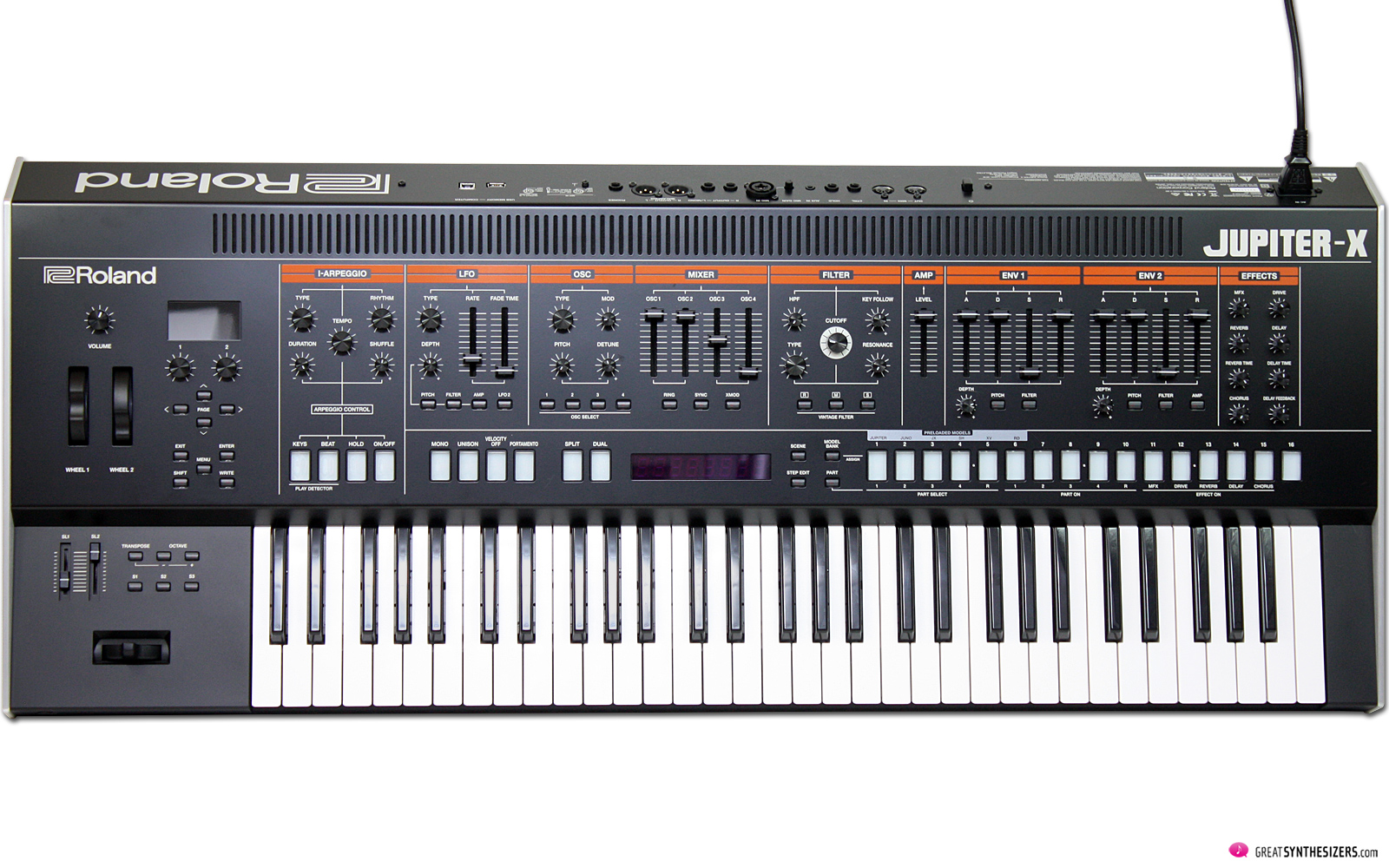



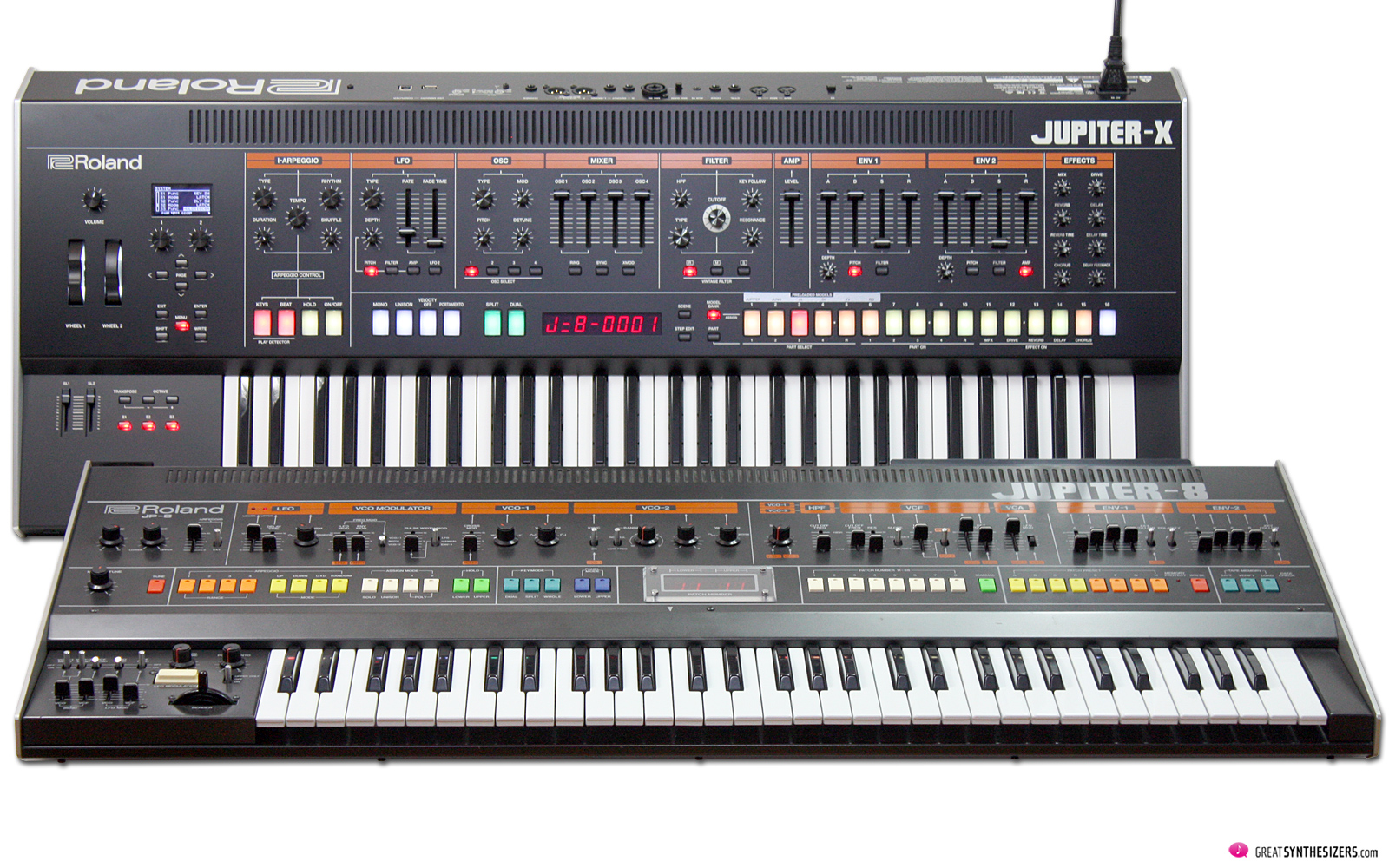

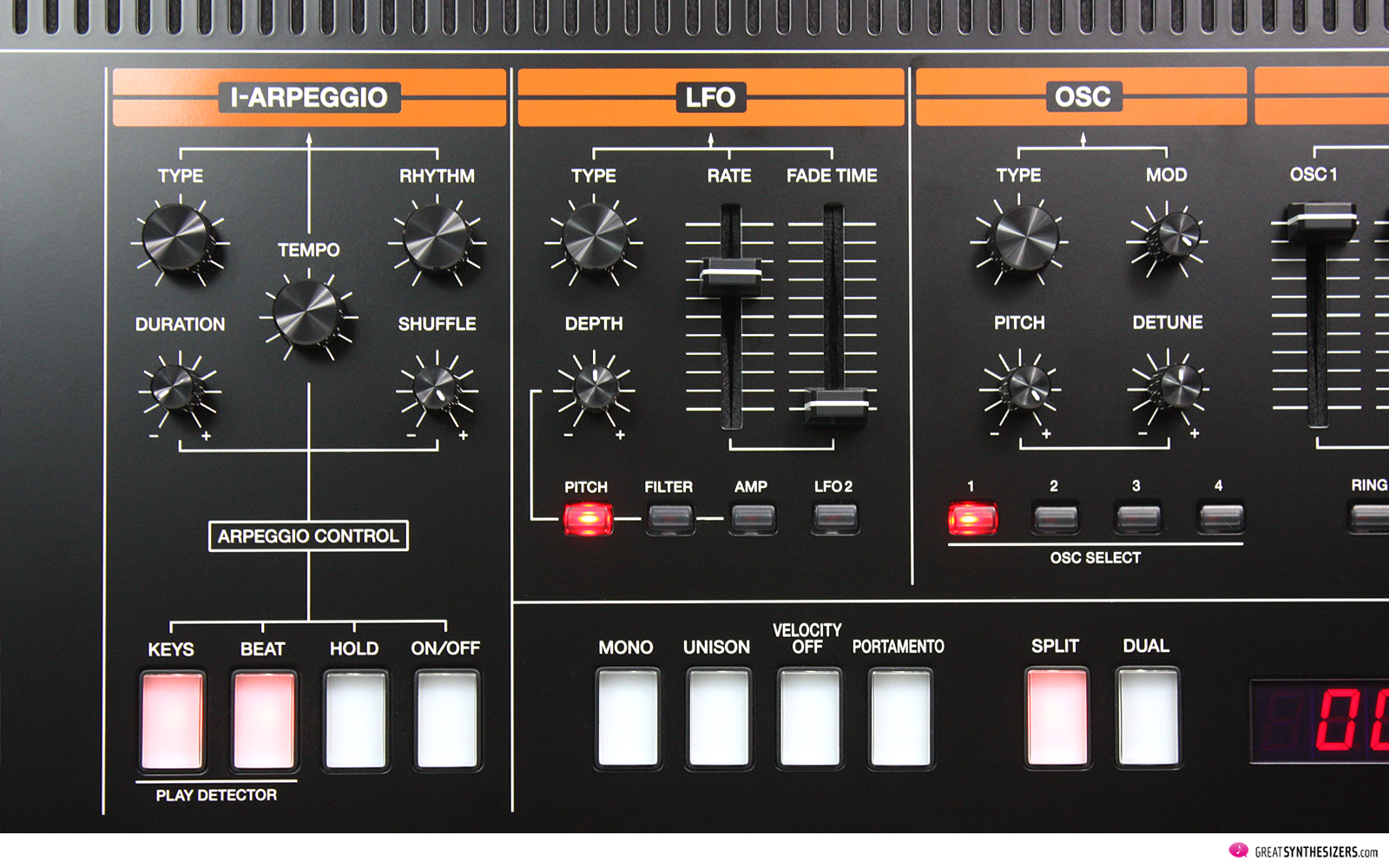
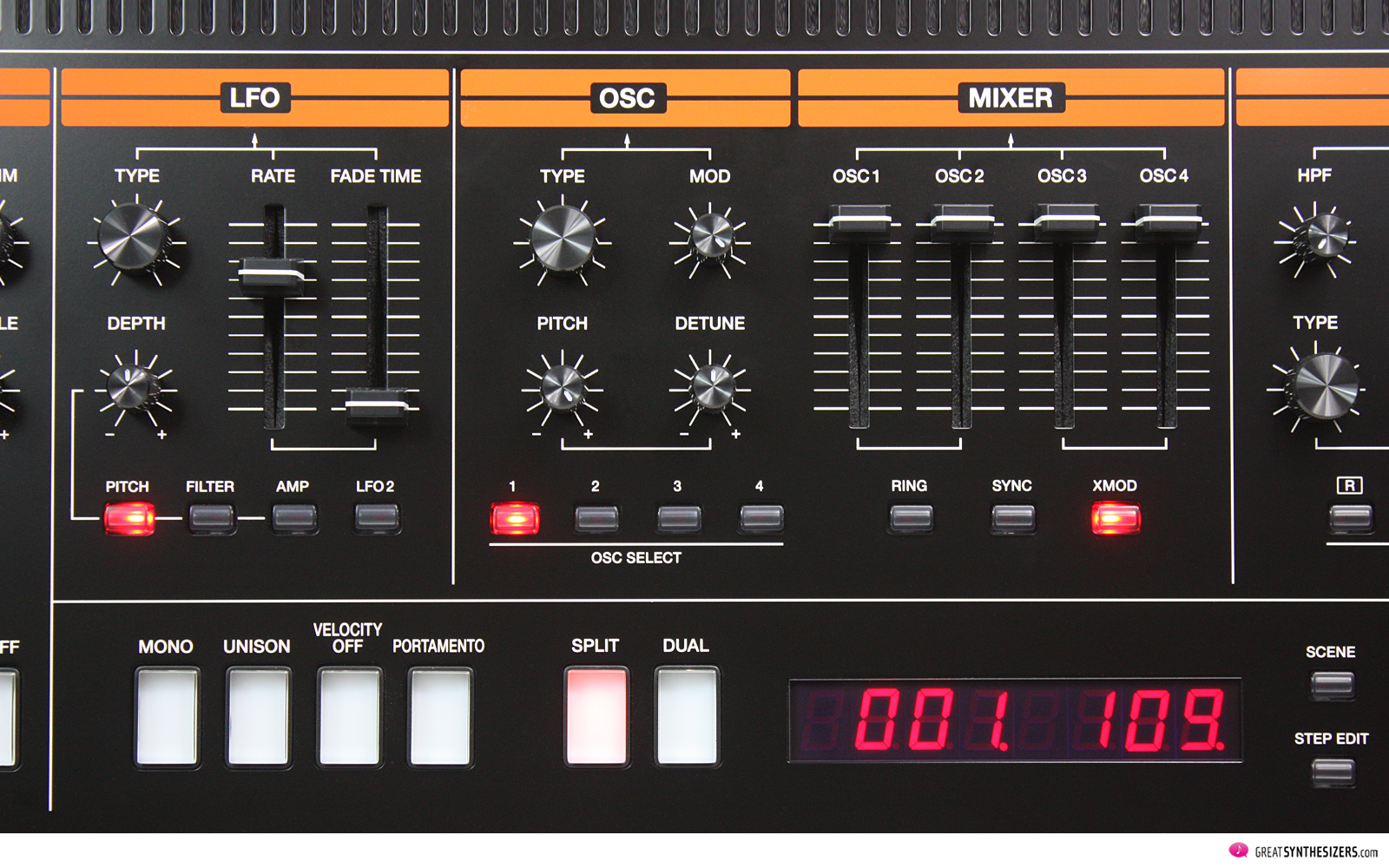
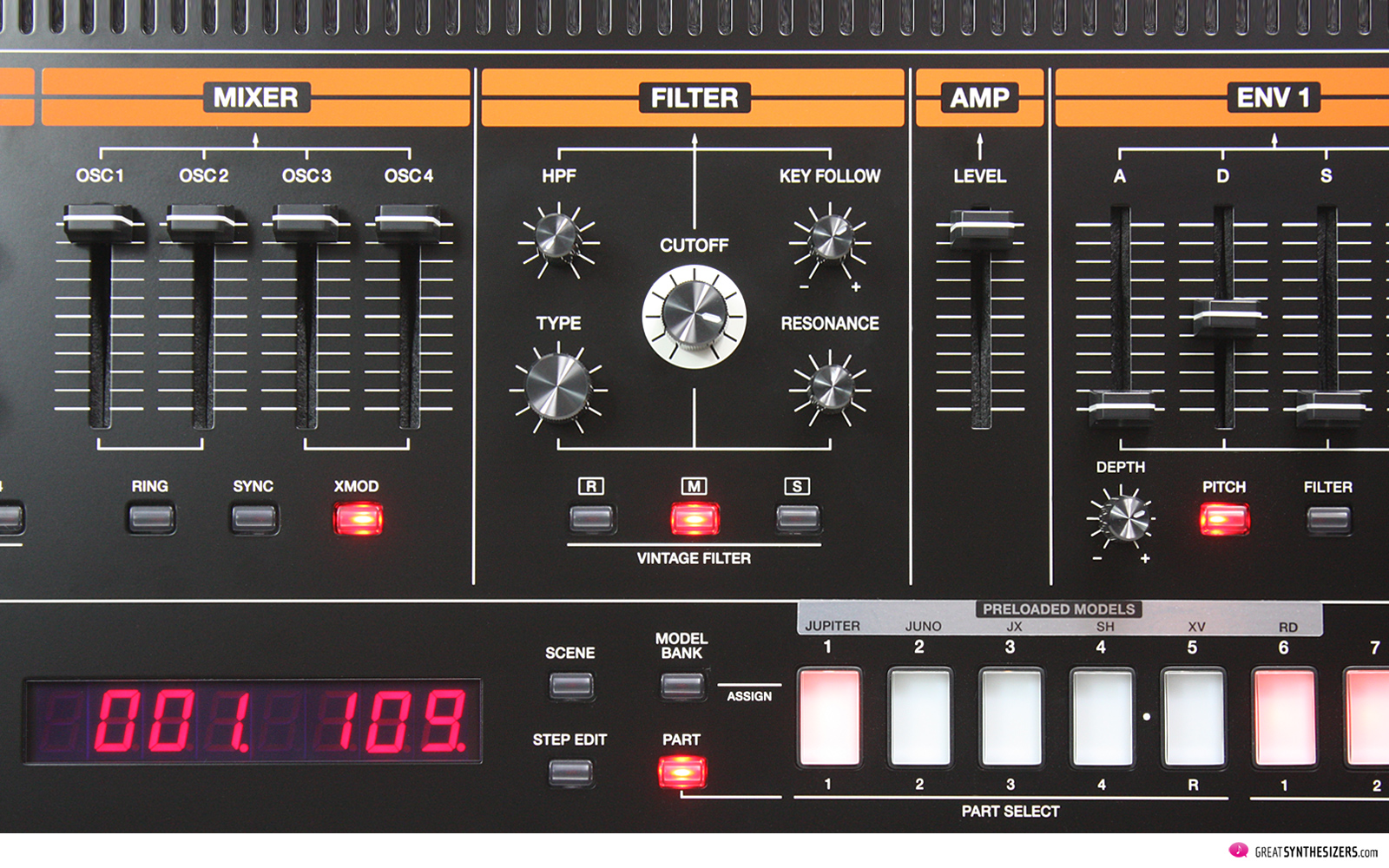

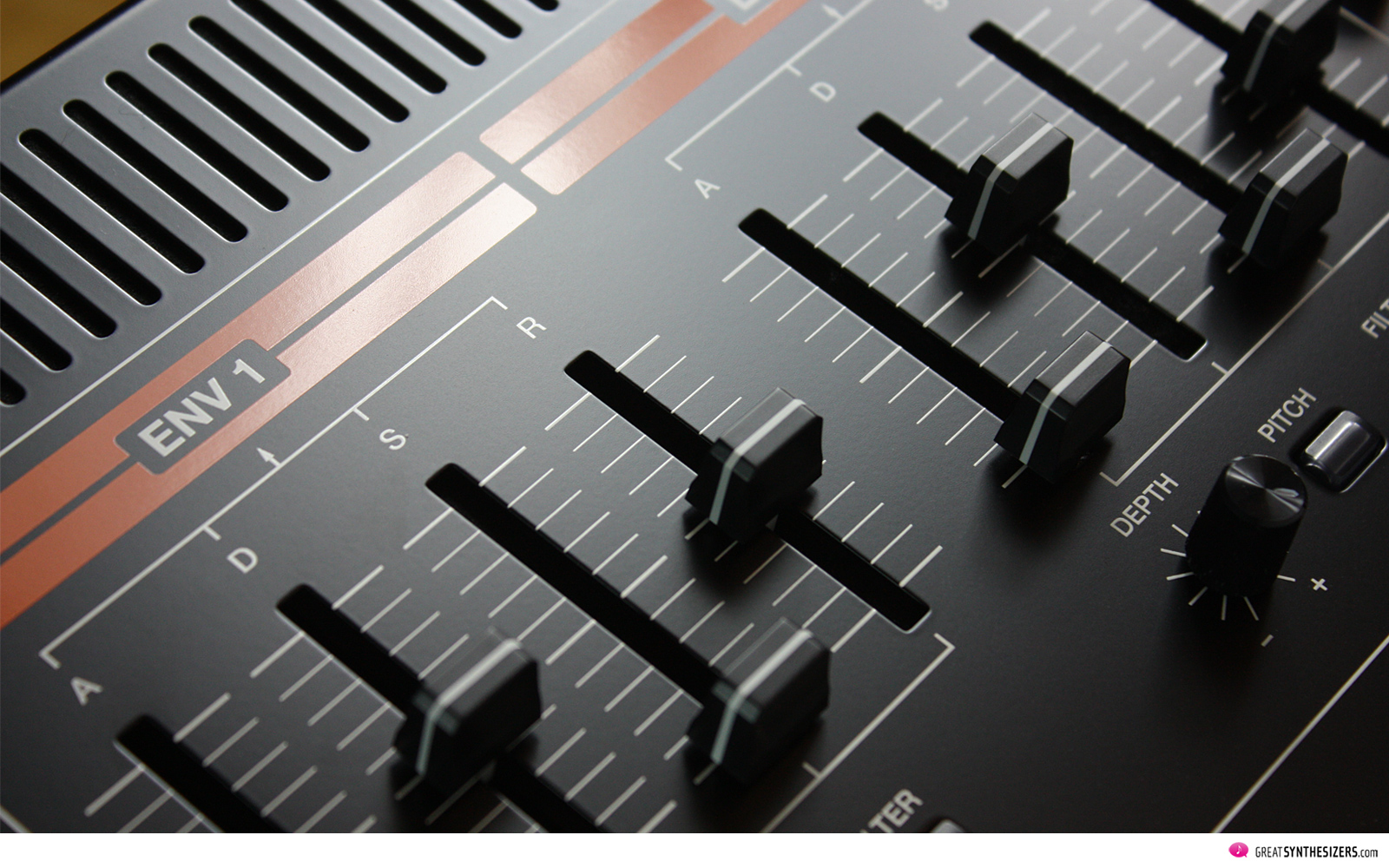

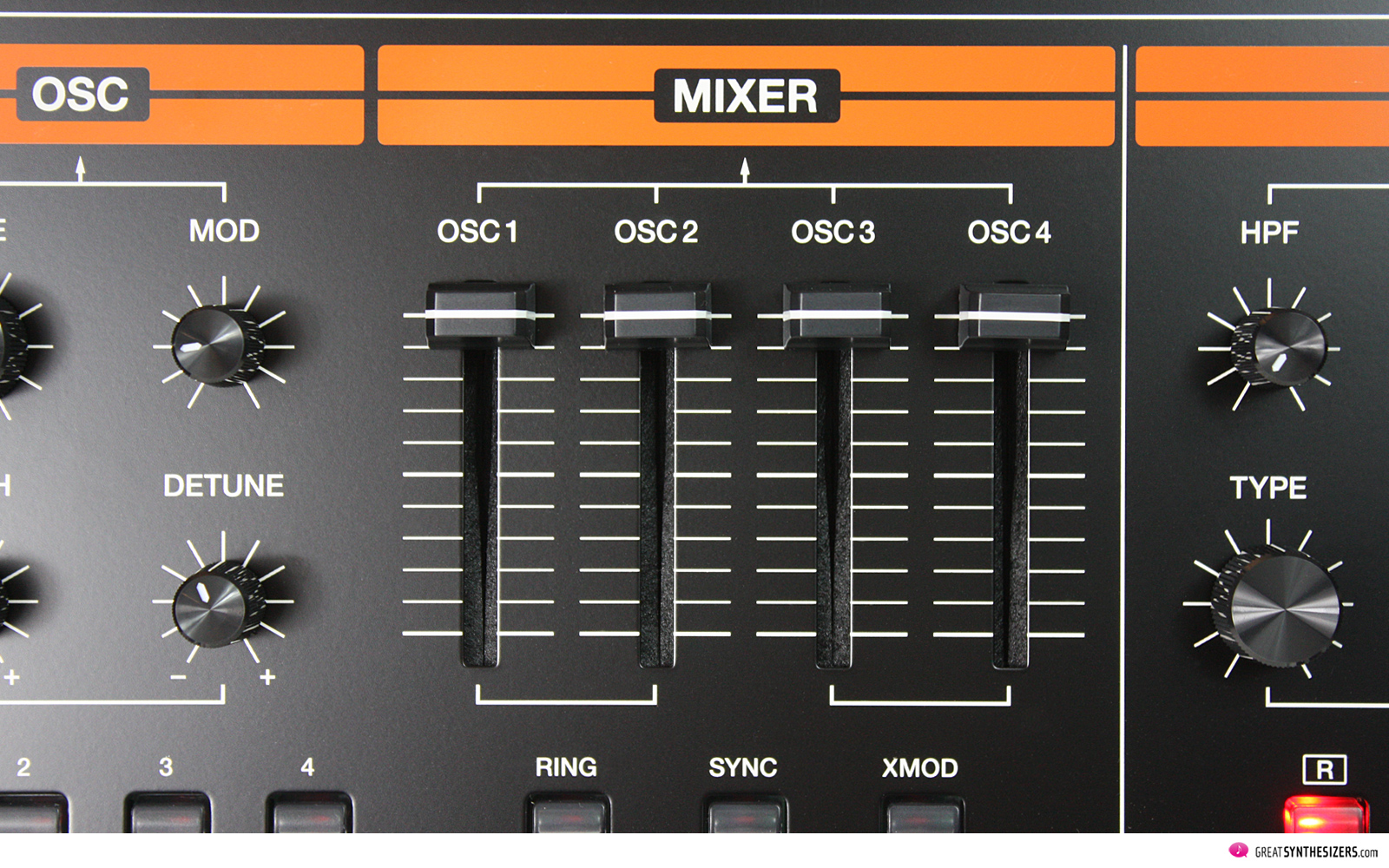

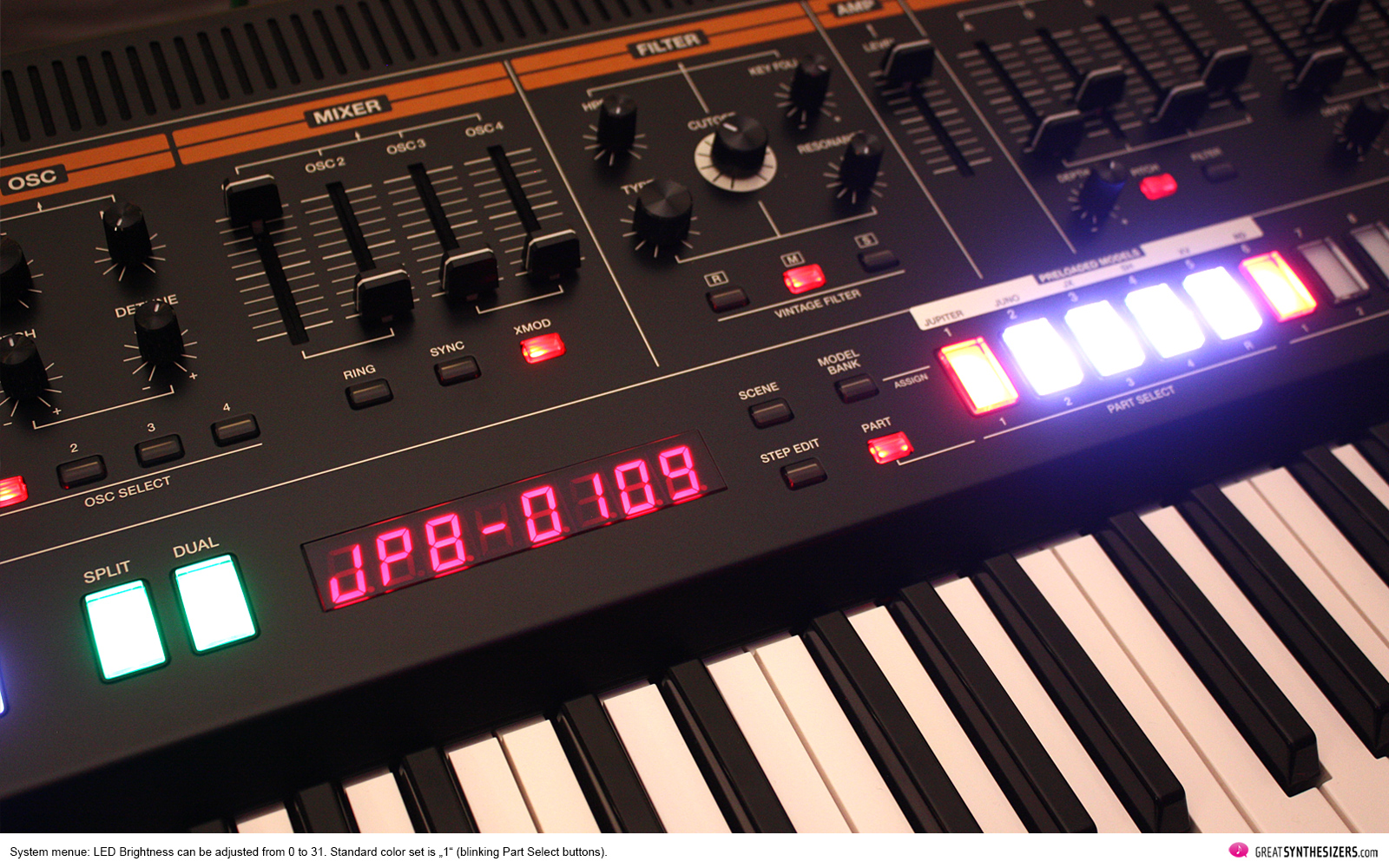
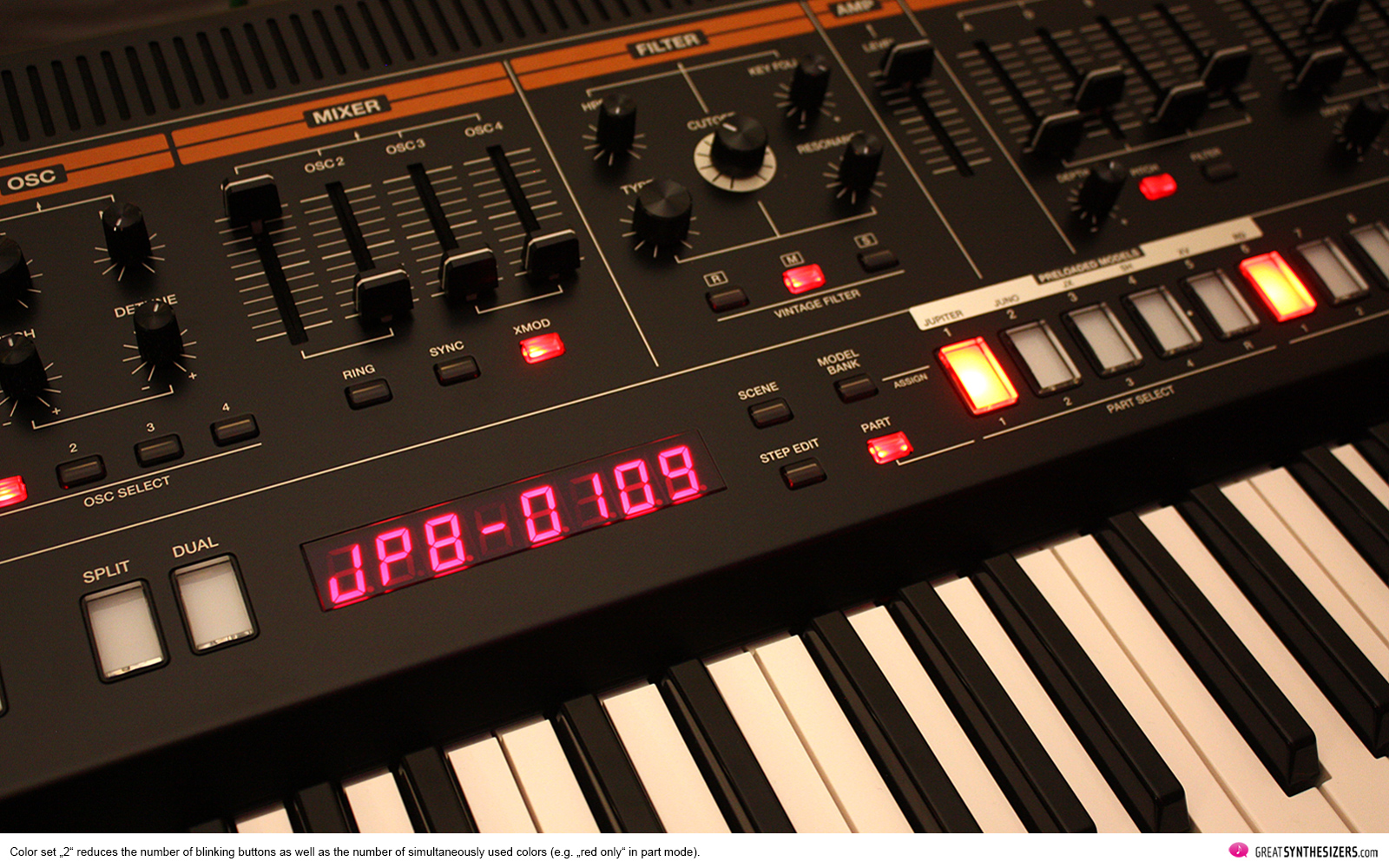
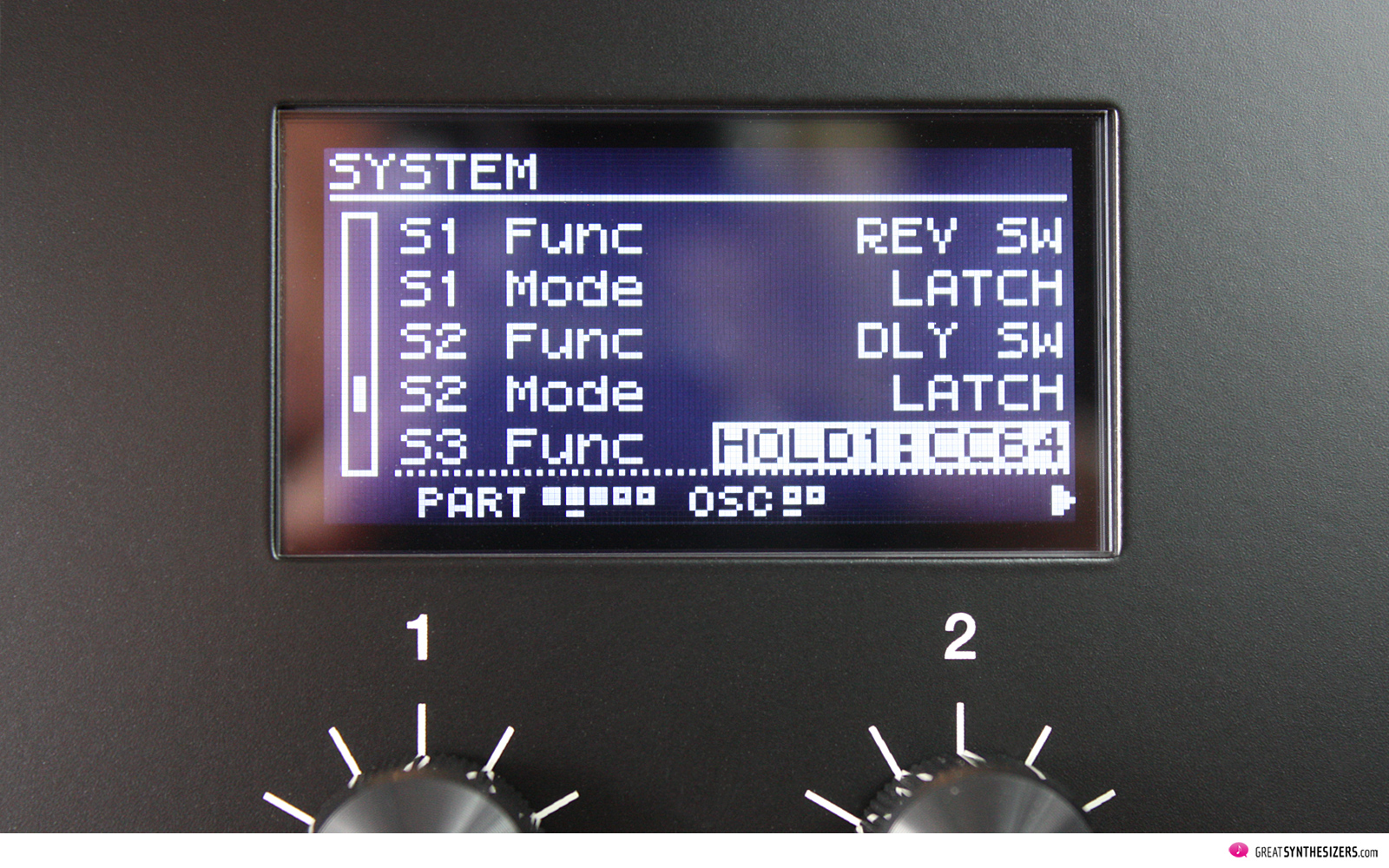
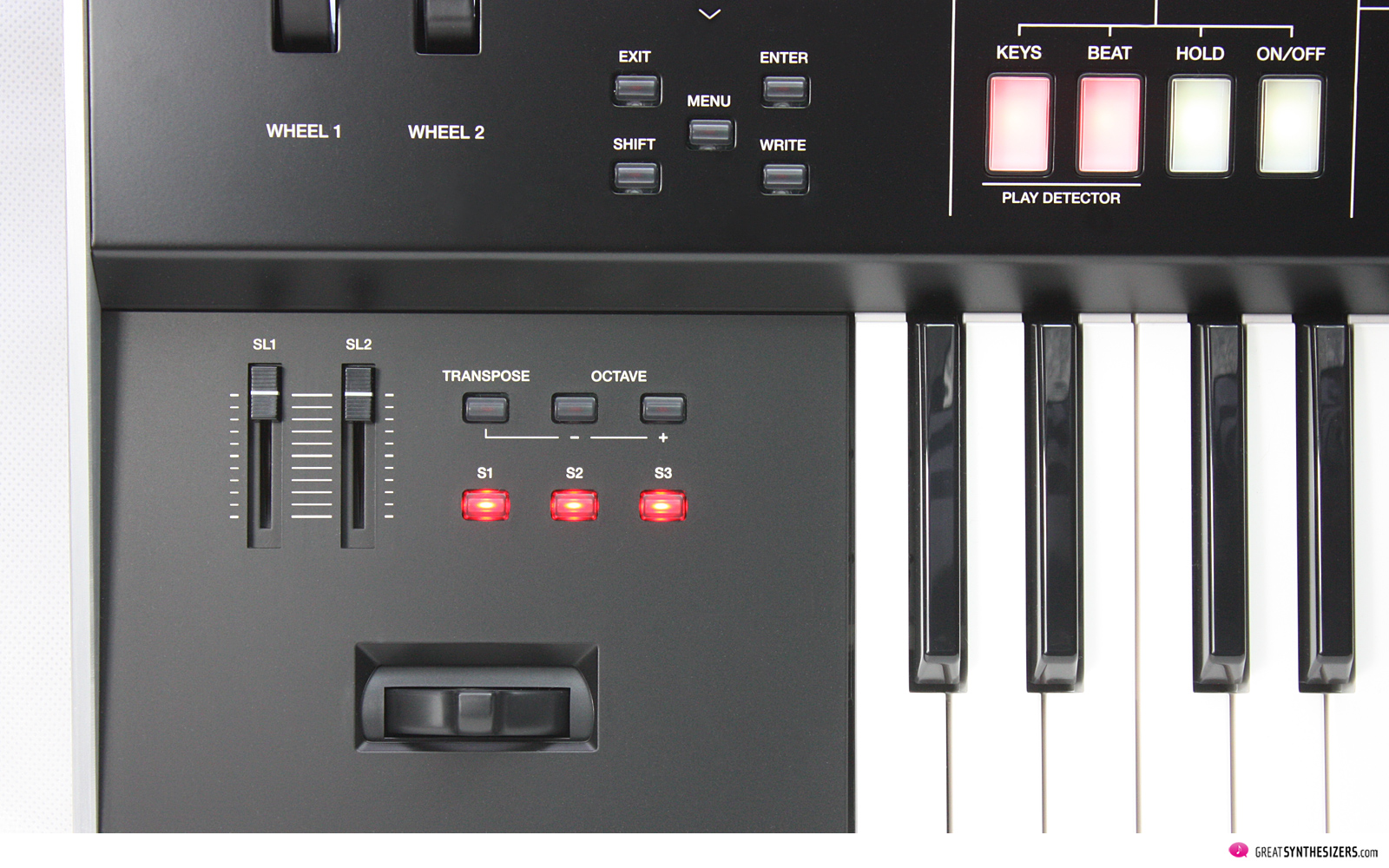

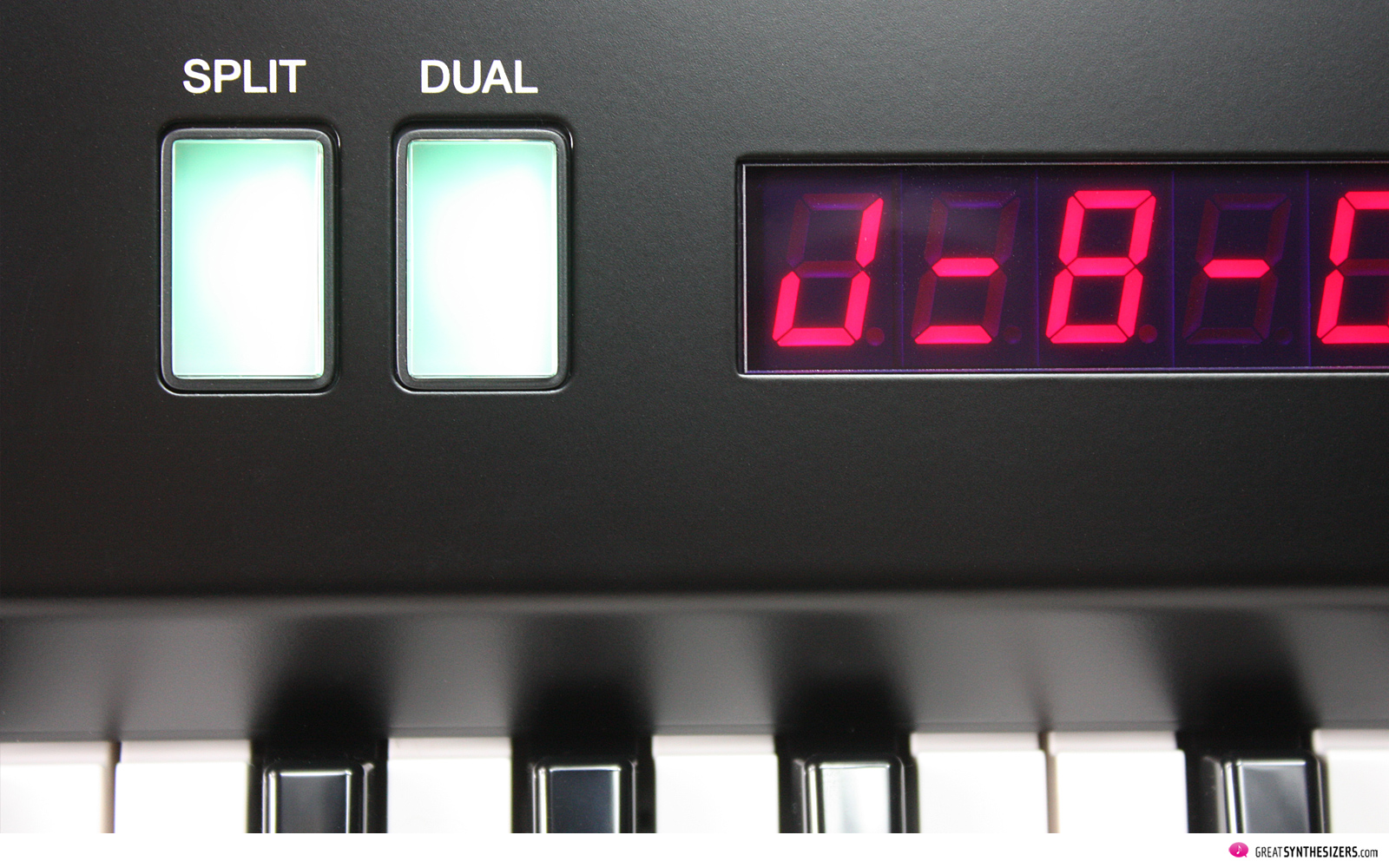

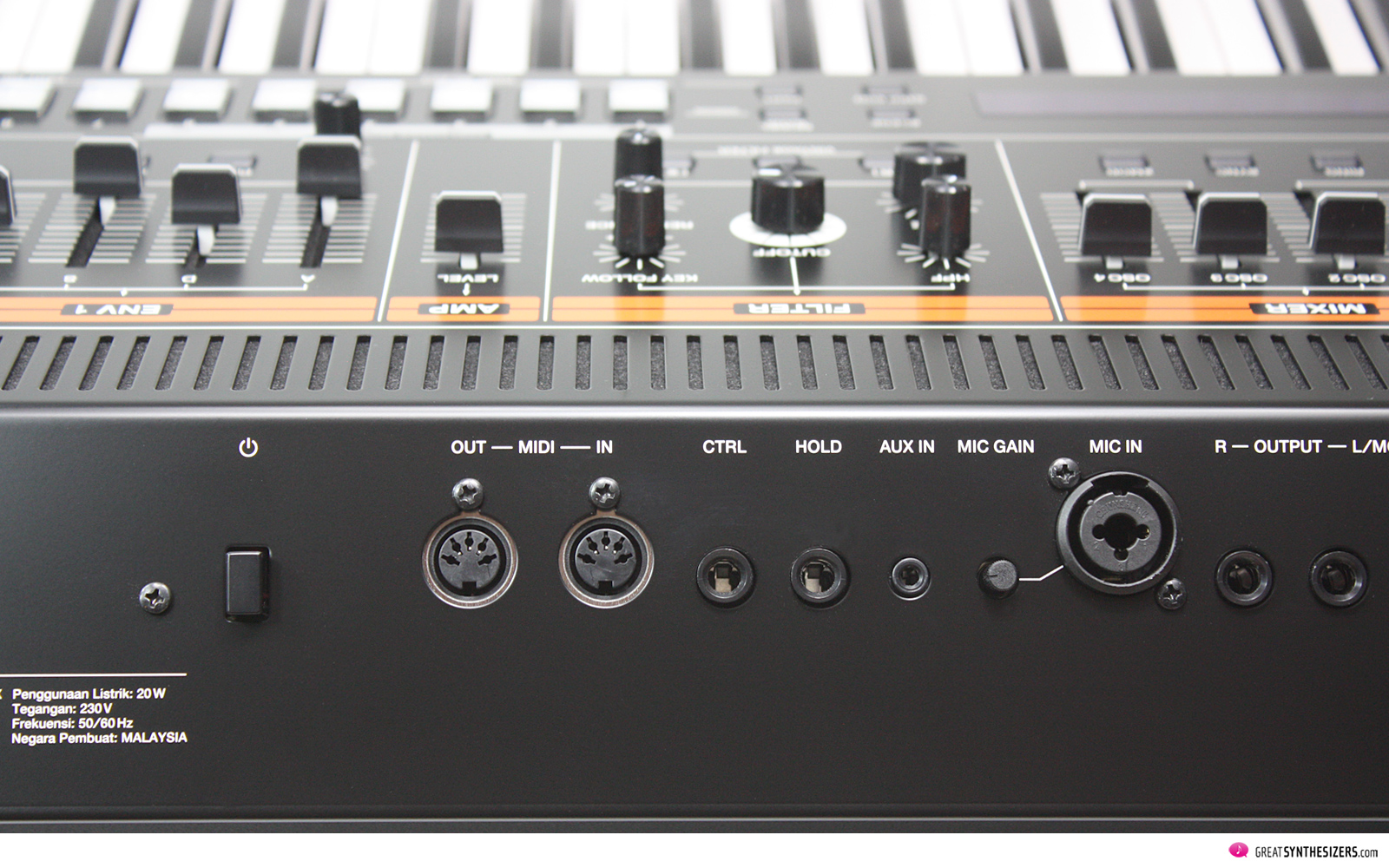
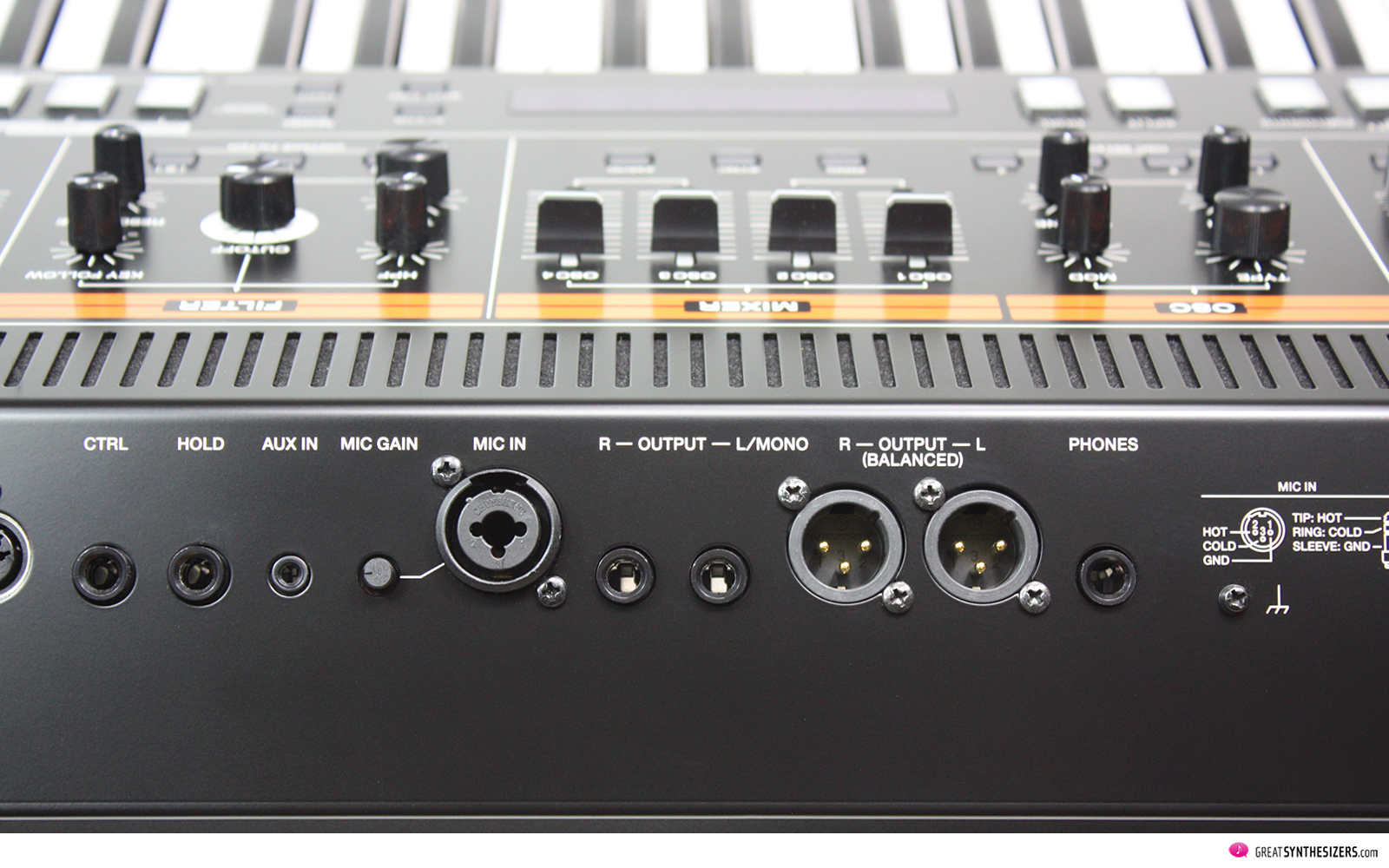
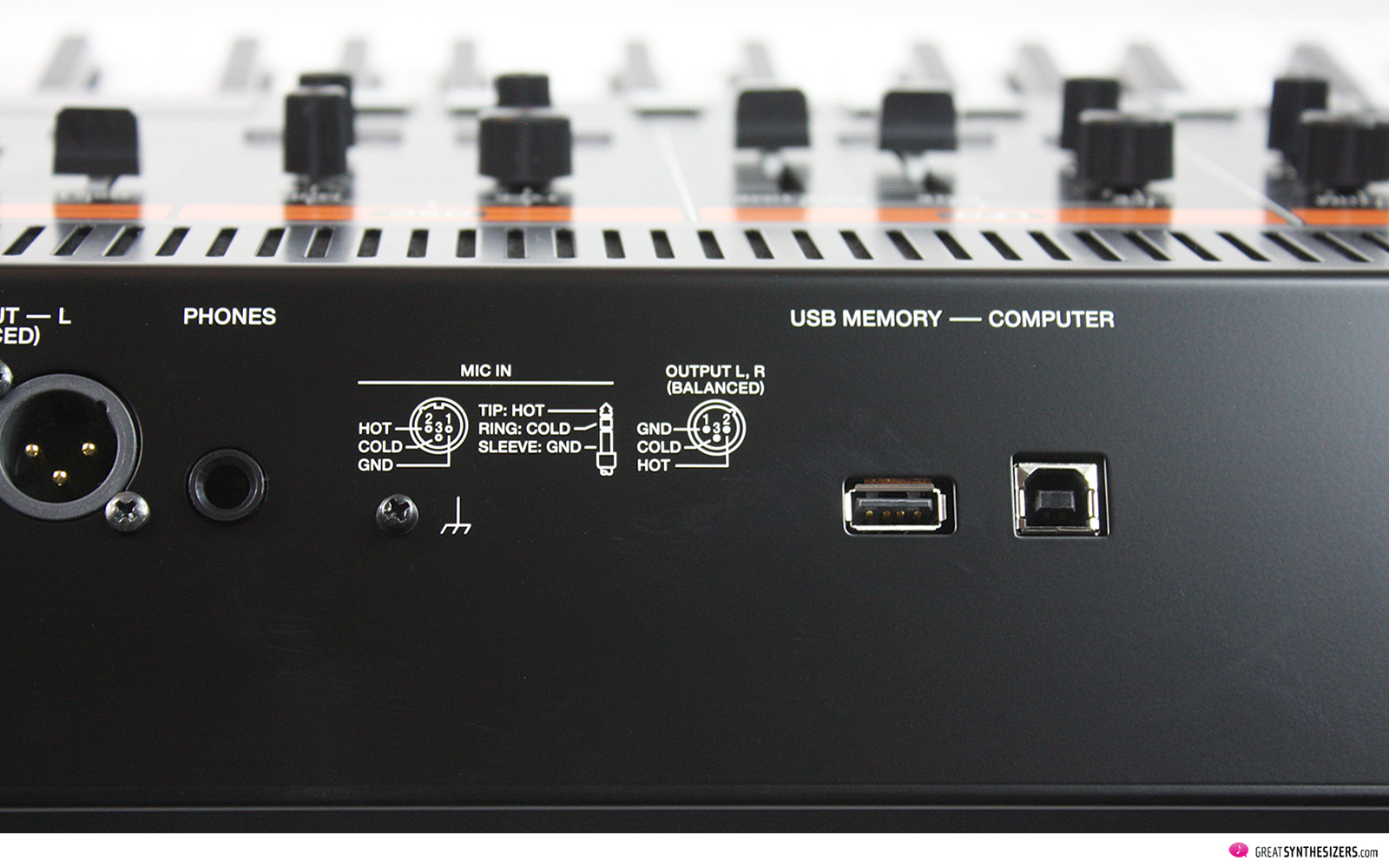
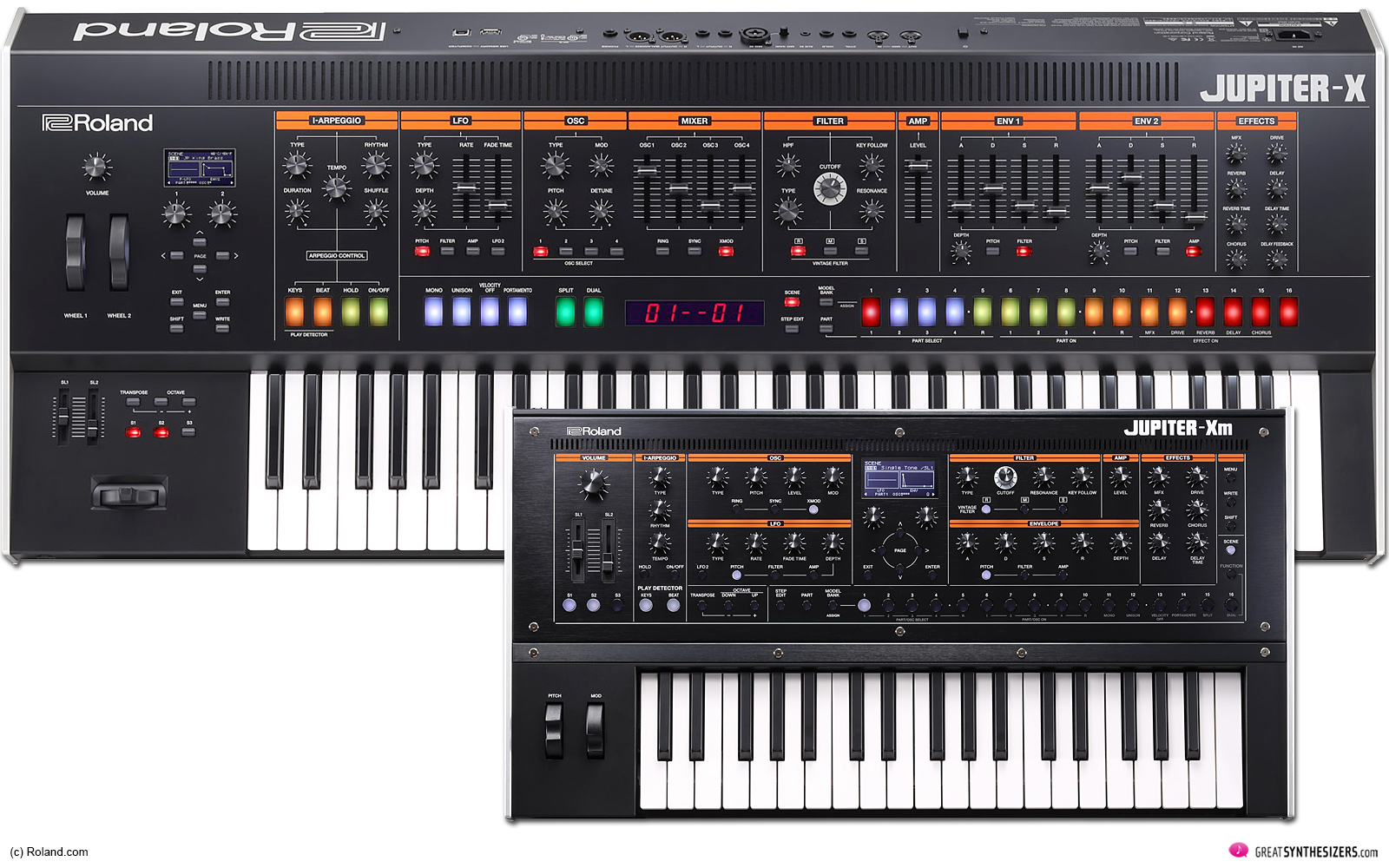
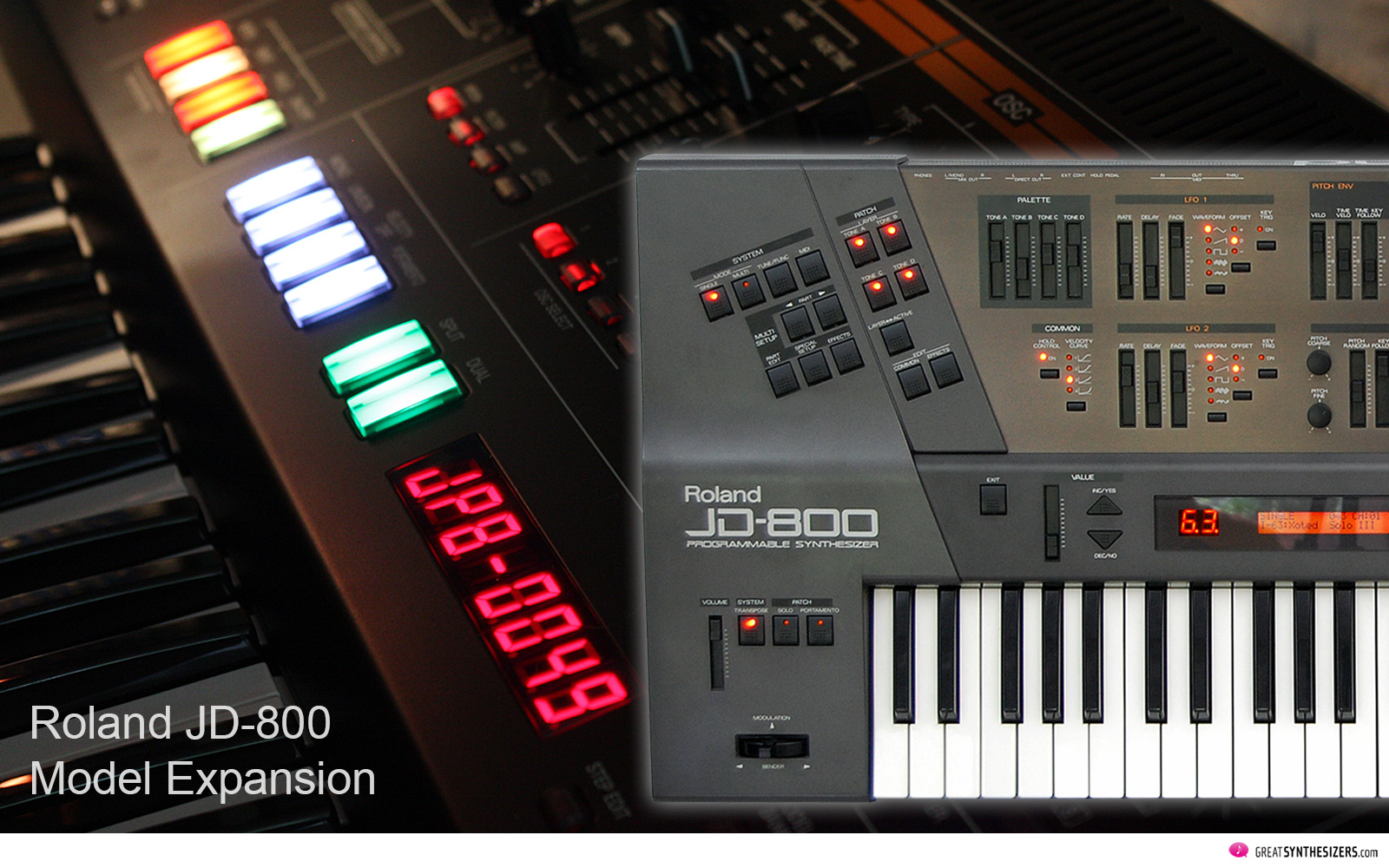
This review sounds very disappointing to a Roland fan like me, but I myself can prove most of the conclusions, unfortunately. Interface for the classic emulations is a compete disaster, misleading and limiting. It’s more of a show – see all those faders, that’s how we used to work with the synth in the past. Now let’s switch to the future and see all those physical controls are simply not enough. Have you ever seen the whole flexibility and parameter sets for JV/XV architecture? Do you really want us to connect something physical to all of those? No? Welcome to the vintage screens, those should give you that feeling.
Why not color LCD surrounded with multi-purpose buttons and encoders? Ah, you should understand, of course, that approach is not vintage enough and you asked for it, didn’t you? Get this metal hardware, isn’t it reassuring? Explore the presets, see all those Fantasia and Pizzagogo, remember those timeless hits?
Borrowing from the past isn’t such a bad thing, but this approach represents not real borrowing of ideas and concepts, but labels, stickers, style and layouts instead. Looks frustrating, but very typical for post-modernistic age.
I have to agree with the headline, this seems to be one of the last stands for the Roland synths, I mean real creative instruments. Workstations like Fantom will still be here, and those are going to provide you with the same emulation engine. Creative you said? Seems, it’s another niche, not for mainstream developers like Japanese Big Three. Just turning the page, keep your precious Jups and JD-XA, we’re all virtual now.
I like and appreciate your review. You considered someone like me. I’m twelve years old (which I think is a tween) and kids like me are the future of music. I don’t play sports like my dad did when he was my age. But I do own a Jupiter-X, a Yamaha CP-88 stage and another Yamaha digital piano–and I make music in my bedroom. I use the Jupiter-X and CP-88 together. There are so many choices with the Jupiter-X and though its taken me months to learn how a synth works – I just thought it was another digital piano with different sounds, it has been a rewarding experience. So much so, I search the web for articles like yours that will help me understand what exactly I’m doing. Part of me likes the freedom of not knowing too – and just doing. Anyway, thank you for the great writing and the sound samples.
Thanks for your comment !
“Borrowing from the past” should come to an end … I really hope so …
Wow Thommy! I am a Head of Music in a Secondary school and I am really impressed that you have found your way around those instruments. Keep going, you clearly have a musical career ahead of you.
Interesting review but it falls into the same trap as a multitude of others in that it fails to understand that while the Jupiter-X may use models of its historic synthesizers as some of the available building blocks that is not the whole picture.
Back in the day reviewers and musicians alike failed to see the potential of the TB303, TR808 and TR909 to name a few but they all became classics.
Here’s the thing, the Jupiter-X is a great studio or stage synth which is part of a hardware/software ecosystem. Start your sound design in Zenology Pro then transfer to the Jupiter to layer and tweak your sound and performance. The Jupiter-X is massively powerful and this is the future whether you’re ready for it or not!
Is it just me or it really sounds thin and cold, like 90s digital synths, without punch in the low end?
This is what I hear in the demo mp3s, please tell me if I’m wrong or not.
I own a System-8, and love it. “Vintage” wise, it has much, much better emulations (ACB) than the Zencore. That’s the first thing that set me off from the Jupiter-X. The second is that, it has literally the same engine as the Fantom, but with seemingly harder to use interface. It’s like it tries to get the best of both worlds (knobby interface vs large screen), and ends up getting the worst of both (not enough knobs/faders/buttons, ridiculously tiny screen and complicated menus). I know the balance is tough, but I prefer any of those over this.
It is nice to see a good review like this, and some comments reinforcing these points, as I just got a JD-XA instead of the Jupiter-X to complement my stage sound palette based on these impressions. Seems like I made a good choice!
Will probably get a Fantom-0 if I still feel the need for the Zencore sounds.
Love all the sound samples showcasing the Jupiter-X! Curious if you might do another review or addendum after the many fine updates including V3.0 which includes a new exclusive engine, doubling of the user slots, major I-arp enhancements, a newly improved more user friendly interface and more?!?
I’m a Fantom owner. I have lusted after the Jupiter X, especially since the recent 3.0 update, but after reading this very well-written review, I am feeling happier about the Fantom. The issue of surface controls not mapping well with the vintage models had not occurred to me and I am glad it was mentioned. Fantom mostly gets around that by having fewer, but well chosen dedicated controls (ASDR, filter, etc) and then a set of soft of ‘soft’ decoder-style knobs under the display that have multi-functions (press them to change function). Of course the Fantom’s touch-screen display is a great way to get around any surface control mapping issues. On the subject of the touch-screen, it is of course infinitely better than the ‘vintage-look’ display on the Jupiter X. It conveys more information in a clearer way and just feels natural to use when tweaking envelopes or filter curves. At the time of writing, the 3.0 update for Jupiter has just been released and it is possible it will be a game changer for creating awesome warm analog-like sounds. Fantom, by contrast, has no older cousin to emulate, so there’s unlikely to be a ‘Fantom’ model for the Fantom (I would guess) although it can be argued that n/zyme is Fantom’s ‘unique’ model. One final point: the Juno-X has just been released, so it turns out that the Jupiter X was not Rolands ‘last-stand’. The Roland world of next-gen HW synths is alive and kicking after all, but possibly the mighty triumvirate of Juno-X/Jupiter-X/Fantom will be the last time Roland can call upon their glory years as a marketing device (I will not miss ‘Helicopter’).
… aaaahhhh, think of it – the helicopter is unique (o:)
… we hope there’ll be time for an addendum this summer …